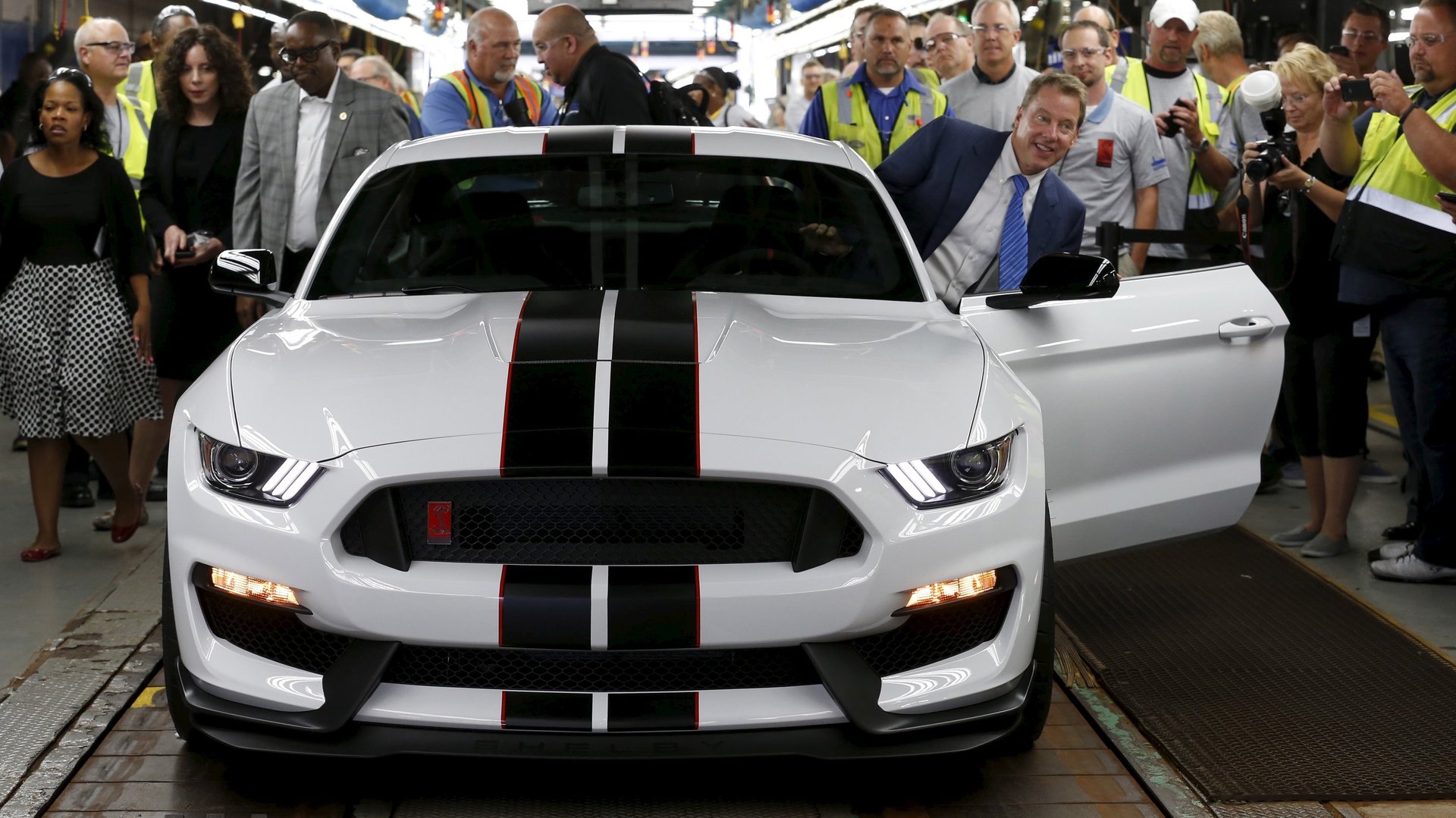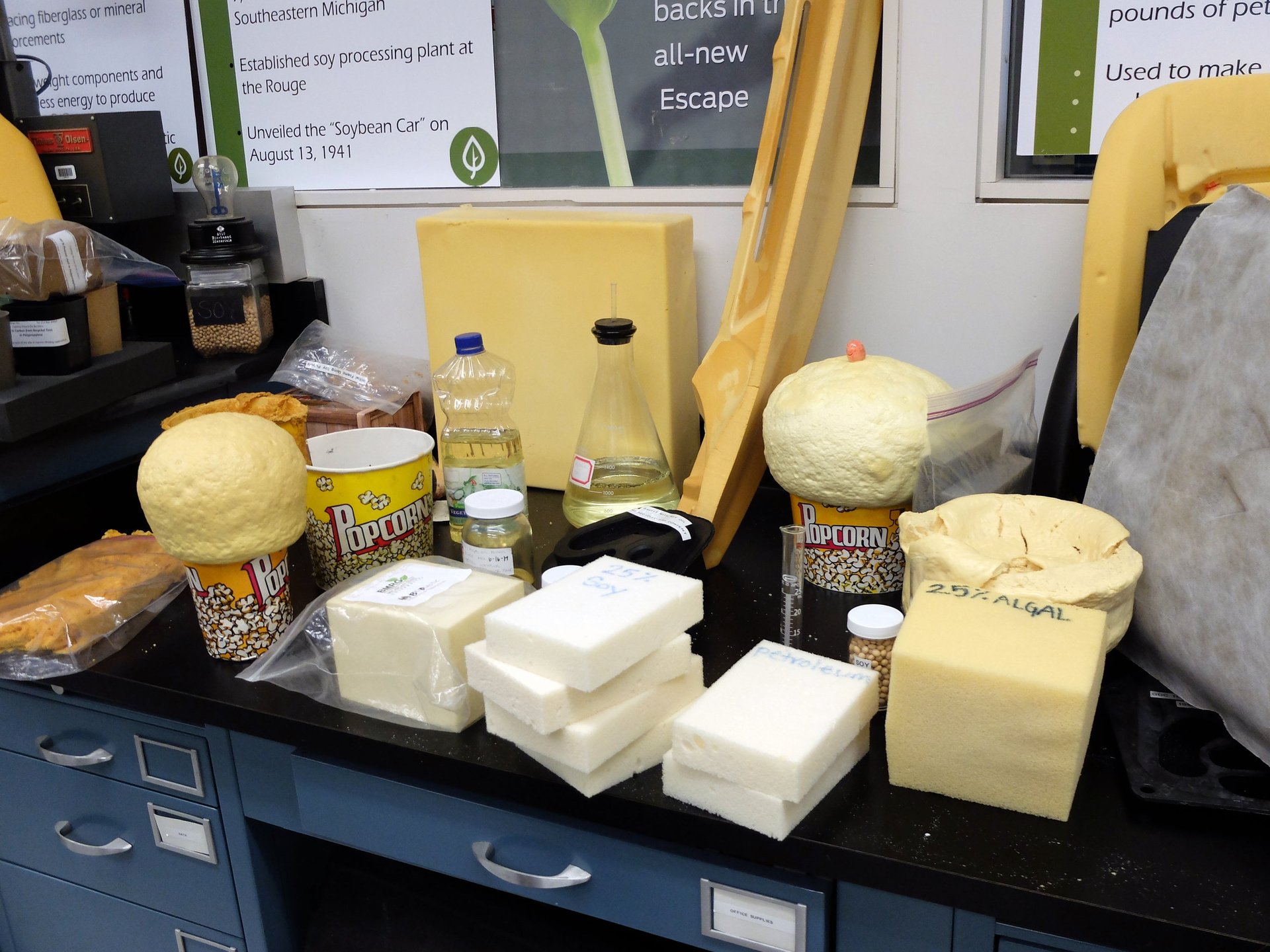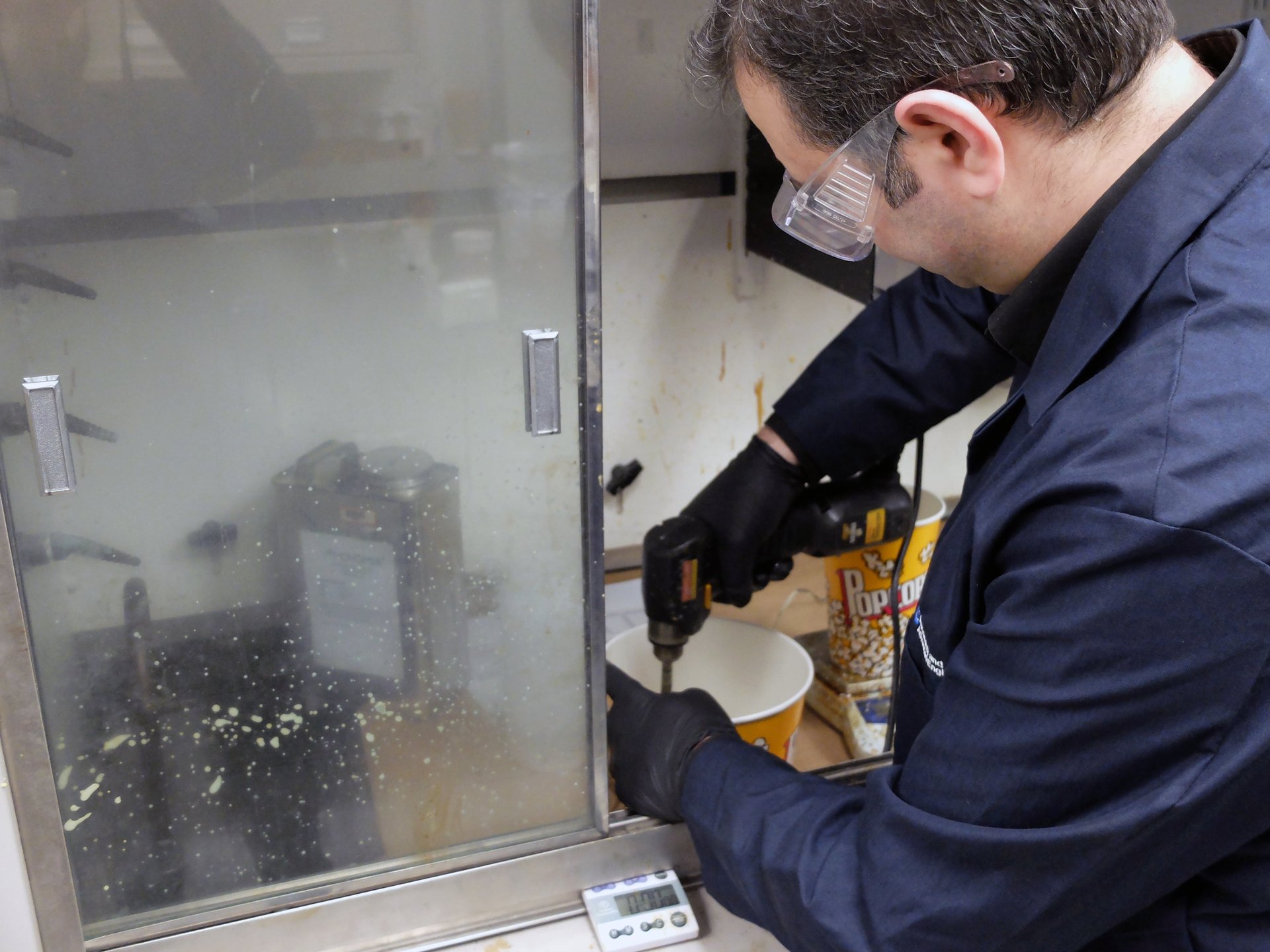Ford is turning air pollution into car parts
In a small lab in a research facility near Ford’s headquarters in Dearborn, Michigan, there’s a picture of Henry Ford whacking a plastic fender made with soybeans with a sledgehammer, and another of him wearing a soybean-fiber suit. He even built a soybean car in 1941. Ford wanted, as his museum suggests, to “combine the fruits of industry with agriculture.” But after World War II, the price of oil plummeted, and the company continued to produce cars that both ran on and comprised petroleum parts.


In a small lab in a research facility near Ford’s headquarters in Dearborn, Michigan, there’s a picture of Henry Ford whacking a plastic fender made with soybeans with a sledgehammer, and another of him wearing a soybean-fiber suit. He even built a soybean car in 1941. Ford wanted, as his museum suggests, to “combine the fruits of industry with agriculture.” But after World War II, the price of oil plummeted, and the company continued to produce cars that both ran on and comprised petroleum parts.
Henry Ford’s desire to bring agriculture into industry was not lost, however. That small lab has spent the better part of the last two decades integrating soy products, among other natural, renewable materials, into Ford cars and trucks. And when oil hit $160 a barrel in 2007, people within Ford started to take the lab’s research more seriously. “The phone started ringing off the hook,” Debbie Mielewski, the head of Ford’s sustainable materials research lab, told Quartz.

Starting with the Mustang in 2007, the research group has slowly been integrating soy materials into every cushion, seatback, and headrest on every Ford vehicle sold in the US. It’s figured out how to use a wide range of waste materials in Ford cars. Tree fibers have replaced fiberglass in some Lincoln cars; wheat straw has been combined with plastic to make storage bins; and shredded paper currency has, fittingly, been used in part to create the coin trays in Ford cars.
And now the lab is now taking on an even grander task: Taking carbon dioxide, one of the most pervasive greenhouse gases in our atmosphere, and using it to create foams for future car seat cushions. Factories, cars, and humans produce billions of tons of carbon dioxide every year. While Ford, and myriad other car companies, are producing and refining vehicles that aren’t reliant on gasoline to run, the vast majority of cars still use plastic parts—created from fossil fuels—in their interiors. That means even the most energy-efficient car still requires a lot of non-renewable material to create.

Ford announced Monday that it has partnered with Novomer, a company that captures carbon dioxide produced by manufacturing plants, which will provide the lab with the waste material as it continues to develop its foams.
During a visit to the lab last week, Mielewski and Alper Kiziltas, a research assistant on her team, showed me how they make the foams. The lab was littered with popcorn tubs, which Kiziltas told me they use because they’re recyclable, and it’s a lot easier to toss them out than it is to clean glass beakers.

In one of those tubs, Kiziltas mixed together a few liquids with a hand mixer, including water and a carbon dioxide solution from Novomer’s captured waste, set the popcorn bucket on the floor, and told us to wait. The solution started expanding, and after a few seconds, grew to look like a giant head of cauliflower sticking out of a popcorn tub. After letting it rest for a few more seconds, it was light and squishy and a tiny bit sticky, like a sponge that had been used a few hours earlier. It wasn’t dense enough to be used in a car seat’s cushioning, but the goal, Ford said in a release, was to have it ready to put in production vehicles within five years.
“Our goal is to dream and think big,” Mielewski said. She said she’s obsessed with reducing waste, both in her personal life (where she can’t stand plastic bags), and at work. She’s managed to get coconut fibers, old tires, and leftover denim fabric into production vehicles, all with at least the same properties as their plastic counterparts. Her team is experimenting with foams made from algae (which can reproduce four times its weight in a day) and bamboo fibers for the Chinese market. “Every time somebody says you can’t, we just love that,” Mielewski said. ”I think it just makes us work harder, really.”

There’s no guarantee that the research will result in a viable product—Mielewski’s team has often looked into materials that haven’t worked out—but the carbon dioxide project hints at the goal that drives her: An entire vehicle produced from sustainable materials. Even if the team’s research can’t be applied directly to a Ford product, it could still have a net benefit for the world. Mielewski told me that her research with tree fibers has appeared in consumer products, including cutting boards and dog feeders, and Ford will license out its inventions where appropriate. Mielewski’s team is also working with Coca-Cola to produce the first soda bottle (or “pop bottle,” as they call it in the Midwest) made entirely out of plant materials. A soda bottle doesn’t need to stand up to the same rigor as a Ford F-150 truck, and so plastics developed by the team could well find their ways into commercial products before they figure out how to make them durable enough for cars. “We don’t care where it ends up first,” Mielewski said.
Over 100 years after the Model T started rolling off Ford production lines, and 75 years since Henry Ford’s soybean car, the company may well be on the precipice of creating something as revolutionary as what its founder dreamt of all those decades ago. Much in the same way HP is working on a 3D printer that prints itself, Ford could one day have a car that’s produced, at least in part, out of the waste from making other cars, as well as the food and products we consume every day.
“We think the whole planet is going to become more resource-constrained,” Mielewski said. ”And we want to provide the solutions to use less.”